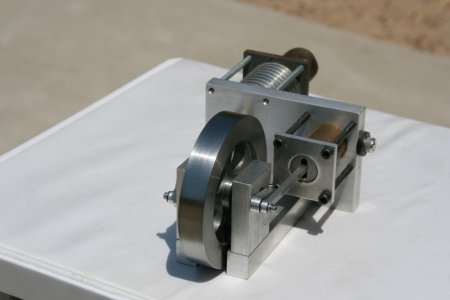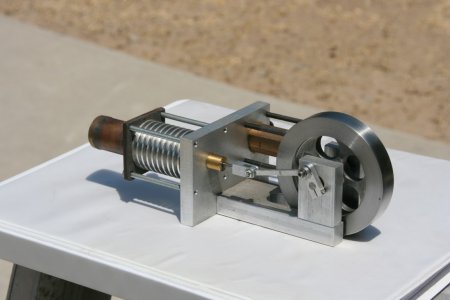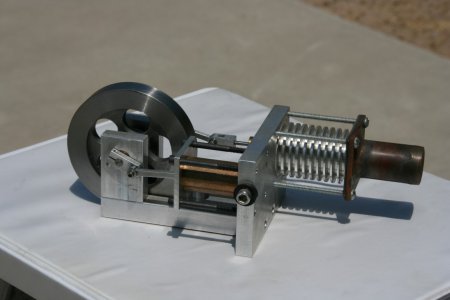- Joined
- Jan 20, 2013
- Messages
- 272
A couple of years ago, I built the Stirling Engine below from plans in a book called "Model Stirling Engines" by Rudy Kouhoupt.
I like the looks of it, but, this dog won't hunt! It doesn't run. It comes darn close, but no cigars!
It comes darn close, but no cigars!
I tinkered and tinkered and as far as I can tell, everything is to specifications. I just put in on the shelf out of disgust, but now I want to re-visit it.
Anyone here in Hobby Machinist Forum Land know how to troubleshoot Stirling engines?
Any one have the video Rudy made about this engine? http://bay-com.com/pid/184/Machining_DVD.html
Thanks in advance! Dave






I like the looks of it, but, this dog won't hunt! It doesn't run.
 It comes darn close, but no cigars!
It comes darn close, but no cigars!I tinkered and tinkered and as far as I can tell, everything is to specifications. I just put in on the shelf out of disgust, but now I want to re-visit it.
Anyone here in Hobby Machinist Forum Land know how to troubleshoot Stirling engines?
Any one have the video Rudy made about this engine? http://bay-com.com/pid/184/Machining_DVD.html
Thanks in advance! Dave







